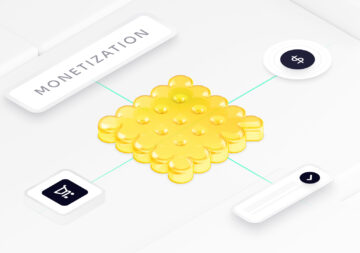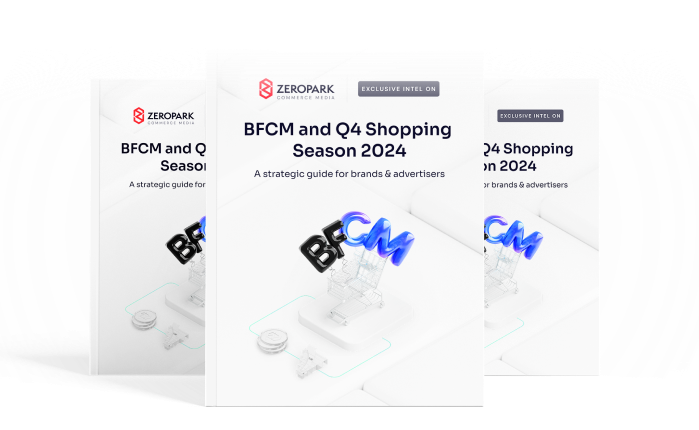📢📢 COOKIES UPDATE 📢📢
Just a day after we launched this article on the cookies landscape for publishers, Anthony Chavez, the Privacy Sandbox VP made a significant announcement (perfect timing, by the way):
“Instead of deprecating third-party cookies, we would introduce a new experience in Chrome that lets people make an informed choice that applies across their web browsing, and they’d be able to adjust that choice at any time”.
Anthony Chavez, the Privacy Sandbox VP
What does this mean for publishers like you? Well, we’re all still figuring that out together! Stay alert for more updates in this topic.
Now, let’s come back to the actual article about publisher monetization 👇
The evolution of digital advertising has seen a significant reliance on third-party cookies to track users across multiple websites, delivering targeted ads based on users’ browsing history and preferences. However, with increasing concerns about user privacy, major changes are happening, and more are still underway.
This article delves into the history and future of third-party cookies, the challenges publishers face, and strategies to thrive in a cookieless world.
The rise and fall of third-party cookies
Third-party cookies have been a cornerstone of online advertising, enabling advertisers to collect user data and deliver personalized ads across different domains. These cookies track user activity across multiple websites, allowing ad tech companies to build detailed profiles for targeted advertising. However, as concerns about user privacy grew, privacy regulations and browser updates began to restrict the use of third-party cookies.
- In 2017, Apple’s Safari introduced Intelligent Tracking Protection (ITP), which purged most first-party cookies after seven days and blocked third-party cookies by default. This was a significant move aimed at protecting user privacy by limiting cross-site tracking.
- In 2019, Mozilla’s Firefox followed suit with Enhanced Tracking Protection (ETP), blocking cookies and storage access from third-party trackers based on the disconnect.me list.
- In 2020, Microsoft Edge joined the trend with Microsoft Tracking Prevention (MTP), further tightening the noose on third-party cookies.
The most significant shift came when Google Chrome, the market leader, announced plans to block third-party cookies by the end of 2023. This change is monumental due to Chrome’s dominance, accounting for over 64% of the global web browser market share.
And of course, this did not happen in 2023, and the dates have been pushed several times, but January 2024 marked the beginning of a gradual phase-out of cookies. The deprecation of third-party cookies in Chrome signals a major transformation for the entire ad tech industry, impacting how advertisers and publishers operate.
The changing landscape of user privacy
The changes in cookie policies are driven by growing concerns about user privacy. High-profile data breaches and the misuse of personal data have led to increased scrutiny and regulation. The California Consumer Privacy Act (CCPA) and the General Data Protection Regulation (GDPR) in the European Union are two major regulations aimed at protecting user data.
These laws require greater transparency and user consent for data collection, impacting how third-party cookies can be used. If you are interested in a deep-dive into the history of cookies in digital advertising, make sure to check our article on the topic.
Impact on publishers
The blocking of third-party cookies poses significant challenges for publishers. Shrinking earnings, banner blindness, and a poor user experience have already made monetization difficult. The removal of third-party cookies exacerbates these issues by limiting the ability to apply frequency capping, create audience lists, and measure ad effectiveness across devices.
According to a report by Digiday, 58% of publishers are worried about measuring ad performance, and 54% are concerned about targeting capabilities. Google’s survey indicated a potential 52% drop in programmatic revenue due to the absence of cookies (although many experts vocally disagreed with that assessment).
Third-party cookies used to play a critical role in the digital advertising ecosystem, as they enabled publishers to:
- Apply frequency capping on ads to avoid showing the same ad repeatedly to the same user, improving user experience and ad effectiveness.
- Create audience lists for personalized ad delivery based on user interests and past behavior.
- Target and retarget users across the web, increasing the chances of conversion.
- Measure ad performance accurately, including cross-device conversions and view-through rates.
Without third-party cookies, publishers seemingly lost these capabilities, making it harder to monetize their traffic effectively… but as it usually happens, with certain challenges, some new possibilities arise.
Commerce media – solution for a cookieless future
As third-party cookies phase out, publishers must adapt and adopt new strategies to maintain effective monetization. One promising solution is commerce media, which focuses on leveraging first-party data and contextual advertising to deliver relevant ads without relying on third-party cookies.
Commerce media allows publishers to monetize their sites by seamlessly integrating product recommendations and brand suggestions directly into their content. This strategy not only enhances the user experience but also ensures that advertisements are highly relevant to the audience’s current shopping intent.
By utilizing first-party data, publishers can gain deeper insights into their audience’s preferences and behaviors, enabling them to deliver personalized ads that resonate with users. It also allows for effective performance tracking – you can learn more about it in this article.
Key benefits of commerce media for publishers include:
- Transparent and brand-safe environment. Unlike traditional advertising methods commerce media operates within the publisher’s ecosystem, ensuring user privacy and compliance with data protection regulations such as GDPR and CCPA. This transparency builds trust with both users and advertisers, fostering long-term relationships and increasing ad revenue.
- Higher engagement rates. Since ads are contextually relevant and seamlessly integrated, users are more likely to interact with them, leading to improved click-through rates and conversions.
- Diverse revenue streams. Commerce media allows publishers to diversify their revenue streams by partnering with brands and advertisers who value targeted and intent-driven advertising.
Other strategies for advertising without cookies
Apart from utilizing commerce media platforms, you can also look into:
Leveraging first-party data
This crucial data, gathered directly from users with their consent, can be used to create personalized experiences and targeted advertising. Implementing Consent Management Platforms (CMPs) and Customer Data Platforms (CDPs) can help manage user consent and gather valuable insights.
First-party data includes information about user behavior on a particular website, such as pages visited, time spent on the site, and user preferences.
Embracing contextual advertising
Contextual advertising, which delivers ads based on the content of the web page rather than user behavior, is making a comeback. Modern contextual advertising goes beyond keywords, using AI to understand semantics, emotions, and preferences.
This method ensures ads are relevant to the content users are engaging with, improving ad performance and user experience. For instance, an article about travel destinations can feature ads for travel insurance or flight deals, aligning the ad content with the user’s current interests.
Developing direct relationships with advertisers
Building direct relationships with advertisers through first-party data can lead to more effective monetization. Subscription models, virtual events, and premium content offerings can help gather first-party data and strengthen advertiser relationships.
For example, publishers can offer premium content or exclusive access in exchange for user data, providing value to both users and advertisers.
Conclusion
The landscape of digital advertising is undergoing a profound transformation with the deprecation of third-party cookies. While this presents challenges, it also opens up opportunities for innovation in ad monetization.
By leveraging first-party data, embracing contextual advertising, and adopting commerce media solutions, publishers can navigate these changes effectively.
As the industry continues to evolve, staying informed and adaptable will be key to maintaining ad revenue and delivering valuable experiences to users.
For publishers looking to future-proof their monetization strategies, embracing these new approaches is essential. Zeropark Commerce Media offers a reliable solution, ensuring that publishers can continue to thrive in a privacy-centric world.
Gabriela Cendrzak





